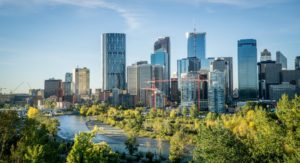We’ve heard it a thousand times. It’s elementary: Plant trees to save the environment. However, it’s far more complicated than that, and it’s easy to get it all wrong, too. Several factors need to be considered when planting an entire forest.
Let’s talk about monocultures
A tree planting activity can become contradictory to its initial purpose if the same species of trees are planted on a large-scale because this results in a monoculture. A tree monoculture is a “green desert,” according to Mongabay. These monocultures are often used for farms and the production of products such as rubber and palm oil.
Substantially, monocultures cannot sustain life because of the lack of biodiversity, driving away animals, insects, and other plants to grow. Often, the trees planted by these activities are not native and may sometime be invasive. Therefore, they grow hostile to the environment, kill other plants and nutrients in the soil, and all signs of life—even streams—fail to thrive.
Restoration of ecosystems
The substitute for planting more trees is the restoration of ecosystems, and this begets biodiversity. Biodiversity is crucial because, to save the environment, we should cultivate wildlife as much as possible. The rule of nature is that every organism needs other organisms to survive. Therefore, creating a forest with a variety of species of trees can invite different kinds of wildlife as well.
Restoration means taking into account the condition of the soil and how to maintain its nutrients. Plants should also be present, other than trees. Then again, this is more complicated than it sounds as there are various approaches to this, such as agroforestry and agricultural productivity.

The follow-through
What we do after the tree planting initiative matters, too. If you plant hundreds of trees and leave them uncared for, they will most likely die. When a plant dies, carbon is emitted into the atmosphere as microorganisms feast on them for decay.
The trees need to be kept healthy for the project to be successful. Therefore, you should call to experts, like an arborist in Salt Lake City, for help. Asking for necessary information, tips, or guides about trees could aid in planning the project.
Building a community is essential, as well. More people working on a project would increase the chances of success. This entails collaborating with locals. It’s beneficial to remember that the locals are the most affected by this project. Depending on the outcome, they are the ones who can reap the effects of forest restoration. Keeping in touch with them and working with them may be beneficial to the progression of the project.
It’s a long way to go to save the planet, but it’s entirely possible
Saving the environment is a collective effort. Most of all, having the right information is critical. Researchers are conducting more studies worldwide to prevent causing more harm to the environment. This kind of consciousness could mitigate the further effects of climate change. If we all work towards this goal, the environment would not have to suffer so much.



















